We were surprised to find that Duddingston Kirk didn’t already have a church micro. The cache itself has accessible parking and is a nice quick find, but if you have a bit of time read on and learn all about this little church’s interesting history. Attached waypoints include -
Ground Zero
At GZ you will hopefully find the cache which is accessible at all times and placed with the permission of the kirk. In the immediate vicinity, you will find three points of interest:
The Loupin’ On Stane
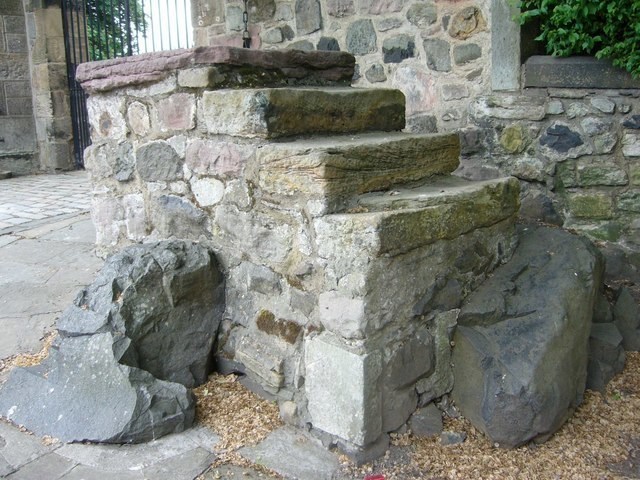
As you look at the kirk through the gate at GZ there is a very short staircase to nowhere on your right. This staircase, known as a Loupin’ On Stane, dates to the 17th century and is believed to have been installed to allow ladies of the congregation who arrived on horseback to dismount with dignity with their horses most likely being stabled at the nearby Sheep’s Heid Inn during the Service.
The Jougs Collar
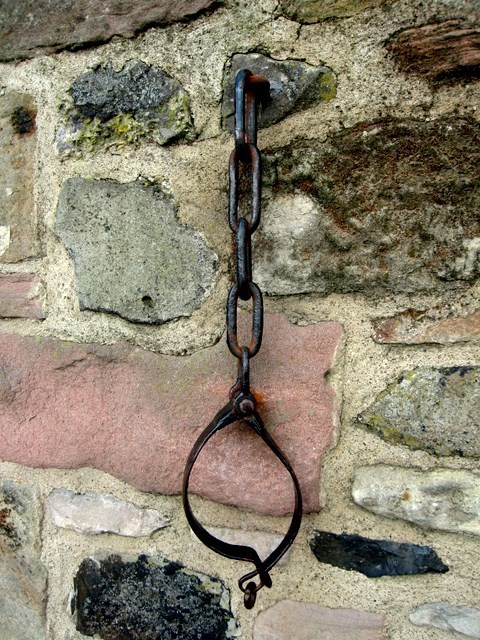
Directly attached to the wall to the right of the gate is an iron collar. These collars, known as Jougs from the latin Jugum meaning yoke, were common in Scotland in the Middle Ages however few examples remain in existence.
Between the 16th and early 19th centuries, the Kirk Session in the parishes wielded considerable power. Whilst they could not punish criminal offences they could punish what were deemed moral offences such as blasphemy, drunkenness, fornication and adultery and non-attendance of the Kirk on a sabbath.
Those punished were either charged a sum of money (this was rare as few parishioners could afford the fine), seated upon the Stool of Repentance in front of the session or chained in the Jougs Collar. An extract from the session minutes dated 14/10/1660 reads:
“The which day, Susan Douglas, adulteress with David Howeyson, adulterer, being cited before the Session, confessed upon their knees and besought the Lord to pardon them of that great sin. The Session ordained them to begin their public repentance at the next Lord’s Day and to stand at the church door in sackcloth frae the second bell to the last, after being released from the Jougs Collar and thence enter the Church in sackcloth.”
The Watchtower
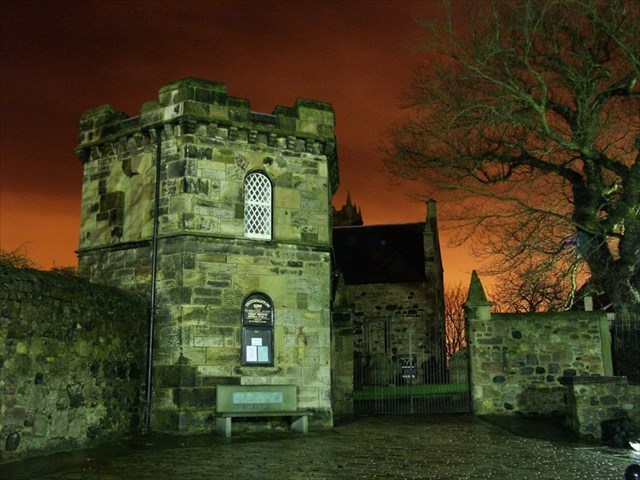
The watchtower, now known as the session house, is the building located to the immediate left of the gate leading to the kirk. Hexagonal in shape it was purpose built in the early 19th century to be used by kirk elders and volunteers as a base to keep watch over the kirkyard.
The need to keep watch was brought about by the lack of cadavers legally available to medical students for their anatomy studies which led to some professors (notably Dr. Robert Knox) to offer payment for fresh corpses. This led to a lucrative ‘profession’ of body-snatching and is also the reason a large number of graves are protected by large walls and/or bars.
Watch was kept for 21 days after a burial at which point the corpse was deemed to no longer be suitable for dissection.
Duddingston Kirk
Now to the kirk itself!
If you’re fortunate to be here whilst the gates are open during summer then there is a lovely café occupied by wonderfully helpful people directly behind the watchtower. It also means that you can explore the church.
The church was, originally, a simple small building with a nave and a square chancel. It was built in stone and in the Norman style which dates it to the 12th century. At this time the area moved from being known as Traverlen - owned by the monks of Kelso - to being leased to a landowner called Dodin who ultimately gave his name to the area which became “Dodyngston” - i.e. the town of Dodin - and subsequently Duddingston.
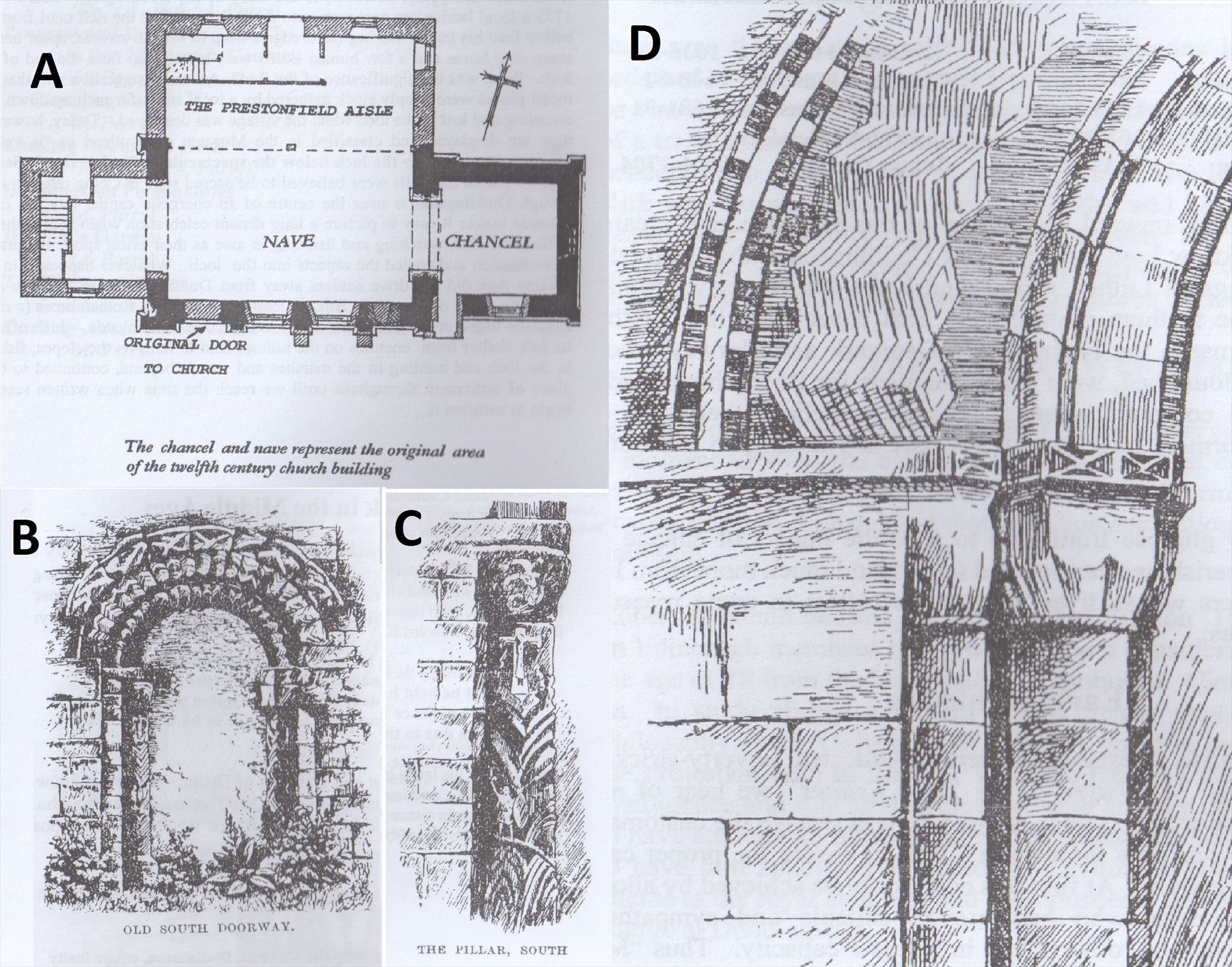
The floorplan of the current kirk is given in A.
The doorway of the original Norman building (B) is now permanently sealed however is still visible from the external south wall of the kirk. The once rich ornamentation is now significantly weather worn however the western pillar (C) still holds some details. Near the top of the pillar, in the centre, is a representation of the Christ crucified. The figure is clad in a long tunic with long sleeves; the arms are straight and the feet are separated. Further down the pillar is a figure holding a large sword in his right hand. On the right side of the central cross is a figure with uplifted arms. On the left is a cock with the head turned from the cross, and below it, in profile and looking towards the cross is a figure, clad in a tunic with one arm raised.
Inside the Kirk The chancel arch (D) is the only part of the original kirk building whose features can still be clearly identified. It is just over 10ft wide with a semi-circular head in two recessed orders, the inner moulded with an angle roll between V-shaped mouldings, the outer covered with a chevron enrichment. The hood-mould is enriched with a billet ornament.
Below each end of the arch are three conjoined pillars linked to it by scalloped capitals. At floor level, the pillars terminate in circular bases resting on rectangular plinths. The plinths show grooves where the rood-screen (a screen to separate the chancel from the nave) would be inserted and there are similar grooves on the central portion of the pillars for the upper support of the screen or for the suspension of the Veil.
Dr Neil’s Garden
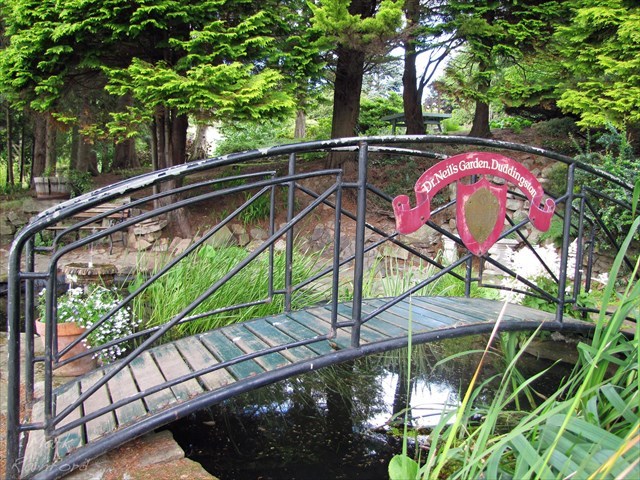
Dr Neil’s gardens is a true hidden gem and one of most remarkably beautiful small gardens in Scotland. The Gardens are positioned immediately south of the kirk and occupy the space between the southern kirkyard wall and the loch shore. In the 1960s the Drs Andrew and Nancy Neil were deprived of their Morningside allotment due to plans to turn it into a carpark. One of their patients, a Session Clerk at Duddingston Kirk, suggested they lease the area of land south of the kirk which had laid unused for centuries. Despite the land being unpromising: full of rubbish, harshly sloping and bearing poor thin soil over volcanic rock the Neil’s took on the project.
Over the course of 40 years the Neils’ transformed this wasteland into series of small colourful terraces in which the planting and changes in level help to keep each area distinct and largely secluded from each other. The Gardens are now maintained by a board of Trustees. Further information can be found at: http://www.drneilsgarden.co.uk/
Thompson Tower and Curling
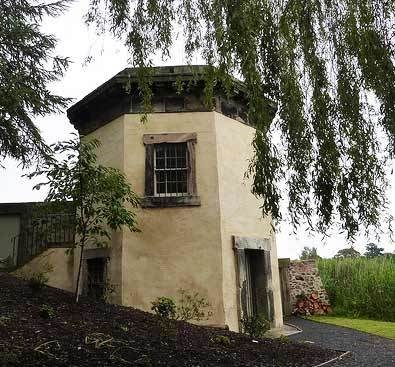
In the south-east corner of Dr Neil’s Garden there is a small two-storey octagonal building known as Thomson Tower. It is so called due to its long association with Dr John Thomson, Minister at Duddingston Kirk 1805-40, friend to Walter Scott and the artist Joseph Turner. Thomson, himself a noted landscape painter, used the upper floor as his artist’s studio.
It was, however, originally built for the Duddingston Curling Society who met from the early part of the 18th century on the lower floor. At this time the loch froze over in the winter months and was used for skating, sliding and curling. In 1803, it was the Duddingston Curling Society who drew up the rules to curling which were to become the worldwide standard for the sport.
Despite falling derelict for a large number of years it was partially restored in 1977 with money raised from various interested associations such as the Canadian Curling Society. In 2008 the Trustees were given a grant to fully restore the tower. It now sports a small Curling museum on the lower floor whilst the upper floor interprets the various stages of the towers history.
Thanks for grabbing our cache,
we hope you enjoyed your visit to Duddingston Kirk